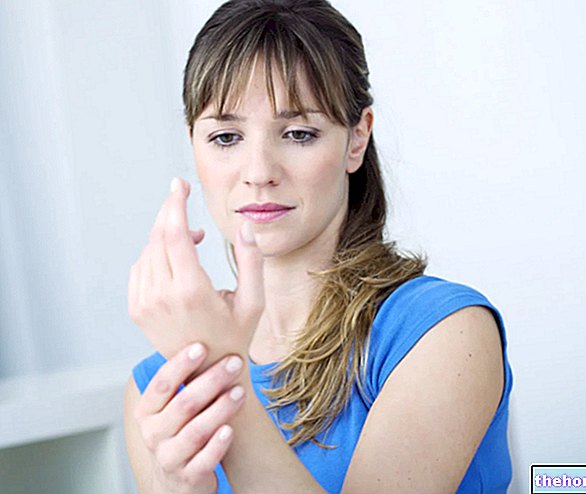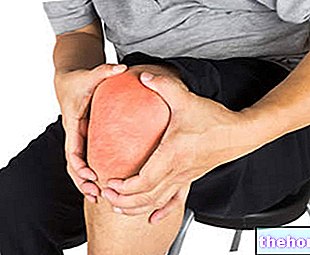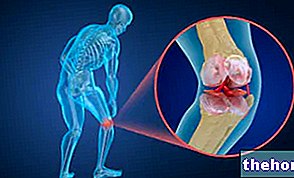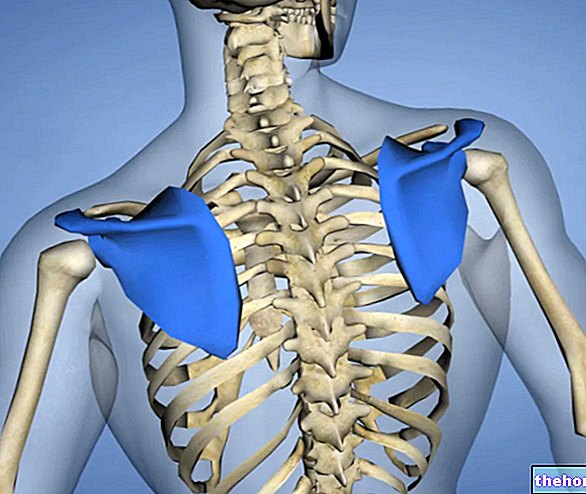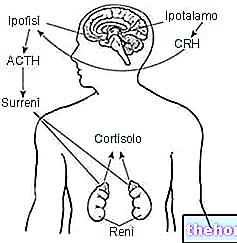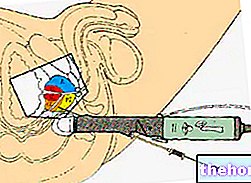
It is a benign pathology that arises from the abnormal thickening of one of the plantar nerves that pass between the metatarsals.
Among the factors favoring Morton's neuroma, it is worth mentioning: the habit of wearing too tight or high-heeled shoes, microtraumas and continuous stresses to the feet resulting from the practice of certain activities, and the presence of particular anatomical deformities (eg: flat feet).
In addition to foot pain, Morton's neuroma often causes other local symptoms, such as burning, tingling, and numbness.
As a rule, the treatment of Morton's neuroma is conservative (orthotics, physiotherapy, anti-inflammatory, etc.); however, there is also a surgical therapy, which doctors adopt only if conservative remedies have proved ineffective.
Avoiding wearing inappropriate shoes definitely helps reduce the risk of developing Morton's neuroma.
Foot Anatomy: A Brief Review

To fully understand Morton's neuroma and its causes, it is important to know at least the general bone structure of the foot; so here is a brief review of some fundamental notions regarding the aforementioned issue.
The foot skeleton is made up of three groups of bones:
- The tarsal bones (or tarsal bones),
- The metatarsal bones (or metatarsals) e
- The phalanges.
The tarsal bones make up the proximal skeletal portion of the foot.
There are 7 in all, they belong to the category of wide bones and form the bone structure known as the tarsus.
A part of the tarsal bones is responsible for connecting the foot to the bones of the leg (tibia and fibula); another part, on the other hand, is responsible for joining the tarsus to the metatarsal bones.
The metatarsal bones represent the intermediate skeletal portion of the foot.
They consist of 5 long bones, arranged parallel to each other, which develop from the tarsus towards the phalanges.
For each metatarsal, it is possible to recognize a base, which is the bone section bordering the tarsus, and a head, which is the bone section on the border with the phalanges.
Finally, the phalanges constitute the distal skeletal portion of the foot.
There are 14 in total and they form the 5 toes, organizing themselves in groups of 3 from the second to the fifth toe and in a group of 2 for the first toe (the arrangement is proximate-distal).
The intermetatarsal sensory nerves of the foot are the plantar nerves that run alongside the metatarsals and which, at the level of the latter's heads, branch into two digital nerves, whose destiny is to innervate two contiguous toes of the foot.
Morton's neuroma: is it a tumor?
The term "neuroma" might suggest that it is a tumor; in reality, however, this is not the case at all.
Morton's neuroma, in fact, is characterized by a process of fibrosis affecting the typical sheath covering the intermetatarsal plantar nerves (epinervium).
As a result of this fibrosis process, the aforementioned coating sheath thickens, developing a sort of ball which, in some cases, is even perceptible to the touch.
Epidemiology: How Common is Morton's Neuroma?
Morton's neuroma can occur at any age, but it predominantly affects people between the ages of 40 and 50.
Three out of four individuals affected by the disease are women.
. High-heeled shoes cause excessive stress on the forefoot, favoring the collision between the intermetatarsal nerves and the metatarsals.This risk factor explains why Morton's neuroma is more prevalent in the female population.
The use of particularly tight footwear is typical of those who practice sports such as football, mountaineering or skiing.
Morton's Neuroma: Which Nerve is Most Affected
The intermetatarsal nerve usually suffering from Morton's neuroma is the one that passes between the third and fourth metatarsal, and which is distributed in the digital sensory nerves innervating the lateral aspect of the third toe and the medial aspect of the fourth toe.
The reason for the greater involvement of this specific intermetatarsal nerve is to be found in the skeletal anatomy of the foot: the distance between the third and fourth metatarsal is less than that separating the other metatarsal bones and this makes rubbing of the intermetatarsal nerve more likely with the neighboring metatarsals.
It should be noted, however, that Morton's neuroma can also affect the intermetatarsal nerve located between the second and third metatarsal, and the one passing between the fourth and fifth metatarsal (the first circumstance is more common than the second).
Morton's Neuroma and Pain
The patient with Morton's neuroma feels the painful sensation in the forefoot area and on the toes that follow the metatarsals protagonists of the pathology.
To be precise, on the toes, the pain localizes along the adjacent faces, as this is where the branches of the suffering intermetatarsal nerve arrive.
Often, the pain related to Morton's neuroma becomes more intense when the patient wears tight or high-heeled shoes and when he spends many hours standing or engaging in stressful physical activities for the foot (e.g. running).
Example to understand ...
When Morton's neuroma develops between the third and fourth metatarsal of the right foot, the patient complains of a painful disorder in the two opposing regions of the third and fourth toes.
Morton's Neuroma and Burning
The burning typically occurs on the sole of the foot and can radiate to the toes reached by the affected nerve.
Morton's Neuroma, Numbness and Tingling
Typically, numbness and tingling affect the same area that is sore and burning.
These symptoms tend to be accentuated when the patient wears shoes with heels or shoes that are too tight.
Morton's neuroma: the signs
The classic clinical sign of Morton's neuroma is the so-called Mulder sign.
Although less indicative of the disease, another sign that can help the doctor in the diagnosis of Morton's neuroma is also the presence of a slight depression between two metatarsals, a depression that appears like a ball to the touch.
Morton's neuroma and Mulder's sign
Mulder's sign is a click, which the doctor warns by practicing a double and simultaneous compression in specific areas of the foot; the first, with one hand, on the sides of the painful metatarsals; the second, with the other hand, in the interdigital area following the painful metatarsal bones.
(assessment of risk factors) and physical examination (analysis of symptoms and signs).
However, doctors tend to deepen their investigations also with instrumental tests, such as X-rays, ultrasound and magnetic resonance imaging, to confidently draw up a definitive diagnosis.
X-ray
X-rays allow us to rule out that the symptoms of a suspected Morton's neuroma are due to a microfracture or a form of arthritis.
Ultrasound
The ultrasound examination allows to identify the anomalies of the soft tissues, such as the one that makes up the nerves.
The use of this instrumental test makes it possible to exclude that the symptoms of a suspected Morton's neuroma are attributable to bursitis or capsulitis.
Nuclear Magnetic Resonance
The nuclear magnetic resonance is able to highlight with absolute certainty the presence of a Morton's neuroma.
This detailed test is useful when symptoms are transient and there are several doubts about the purely clinical diagnosis.
Morton's Neuroma and Differential Diagnosis
The pathologies that the differential diagnosis approach must distinguish from Morton's neuroma are:
- Capsulitis of the forefoot
- The forms of arthritis;
- Bursitis;
- Microfractures;
- Metatarsal osteochondrosis (or Freiberg's disease).
Morton's neuroma and orthotics
Made to measure for the patient, orthotics are medical-health devices to be placed in footwear with the aim of reducing the compression that the metatarsals exert on the suffering nerve.
Morton's Neuroma and Footwear
Those suffering from Morton's neuroma should only wear shoes with wide toes (which allow movement of the fingers) and avoid wearing narrow or heeled shoes until the problem is resolved.
The change of type of footwear is a fundamental point of the therapeutic management of Morton's neuroma.
Morton's neuroma and local application of ice
Applying ice for 15-20 minutes, several times a day, temporarily reduces inflammation and relieves pain.
Morton's neuroma and NSAIDs
NSAIDs are anti-inflammatory drugs that help control pain.
In the presence of Morton's neuroma, they have limited efficacy.
It is good to remember that, before taking an NSAID, the patient should consult his doctor.
Morton and Cortisone neuroma
Cortisone is an anti-inflammatory drug; its injection in the point where Morton's neuroma resides, therefore, serves to attenuate the inflammation and the consequent painful sensation.
It is very likely that the treating physician will use an ultrasound system to locate the exact injection site.
Unfortunately, the local injection of cortisone is not infrequently effective temporarily (after an initial period of relief, the pain reappears).
When this happens, the treating physician could consider the hypothesis of a second injection; however, it must be remembered that the repetition of this treatment is a source of damage to the tendon and ligament tissues of the foot.
Morton's Neuroma and Ultrasound Guided Sclero-Alcoholization
Performed under the guidance of an ultrasound machine, the ultrasound-guided sclero-alcoholization consists in the injection of a solution based on diluted alcohol exactly where Morton's neuroma resides.
It is a valid alternative to cortisone and surgery: the alcohol-based solution, in fact, has an "effective toxic function against the fibrous tissue formed around the suffering nerve.
As a rule, ultrasound-guided sclero-alcoholization involves 2 to 7 injections per treatment cycle.
Sclero-alcoholization is proving to be an effective treatment: many patients who have undergone this therapy have then found a significant reduction in pain.

Morton's neuroma and radiofrequency ablation
Also performed through the guidance of the ultrasound system, radiofrequency ablation involves exposing the area where the fibrous tissue resides to a source of heat generated by an alternating current device.
In efficacy, it is comparable to US-guided sclero-alcoholization.
Morton's Neuroma and Physiotherapy
For those suffering from Morton's neuroma, physiotherapy involves muscle stretching exercises, aimed at improving the mobility of the ankle and foot.
For further information: Medicines for the Treatment of Morton's NeuromaMorton's Neuroma and Surgery
There are at least three types of surgery that can be applied in the presence of Morton's neuroma:
- Neurectomy. It involves the incision of the foot (either on the back or on the sole) and the removal, from the suffering nerve, of the portion of fibrous tissue.
- Surgical decompression. It consists in creating more space around the suffering nerve;
- Cryogenic neuroablation. This surgical technique exploits the very low temperatures (between -50 and -70 ° C), in order to destroy the suffering nerve fibers that lead to the painful sensation.
Morton's Neuroma and Neurectomy: an in-depth study
Generally, neurectomy is resolutive; however, like any other surgical operation, it is not completely free from complications:
- In some patients, the fibrous tissue reforms after some time after the operation (relapse).
- Removing the fibrous tissue can result in a permanent feeling of numbness in the foot.
- An infection or a calloused area, known as plantar keratosis, can develop at the incision site.


